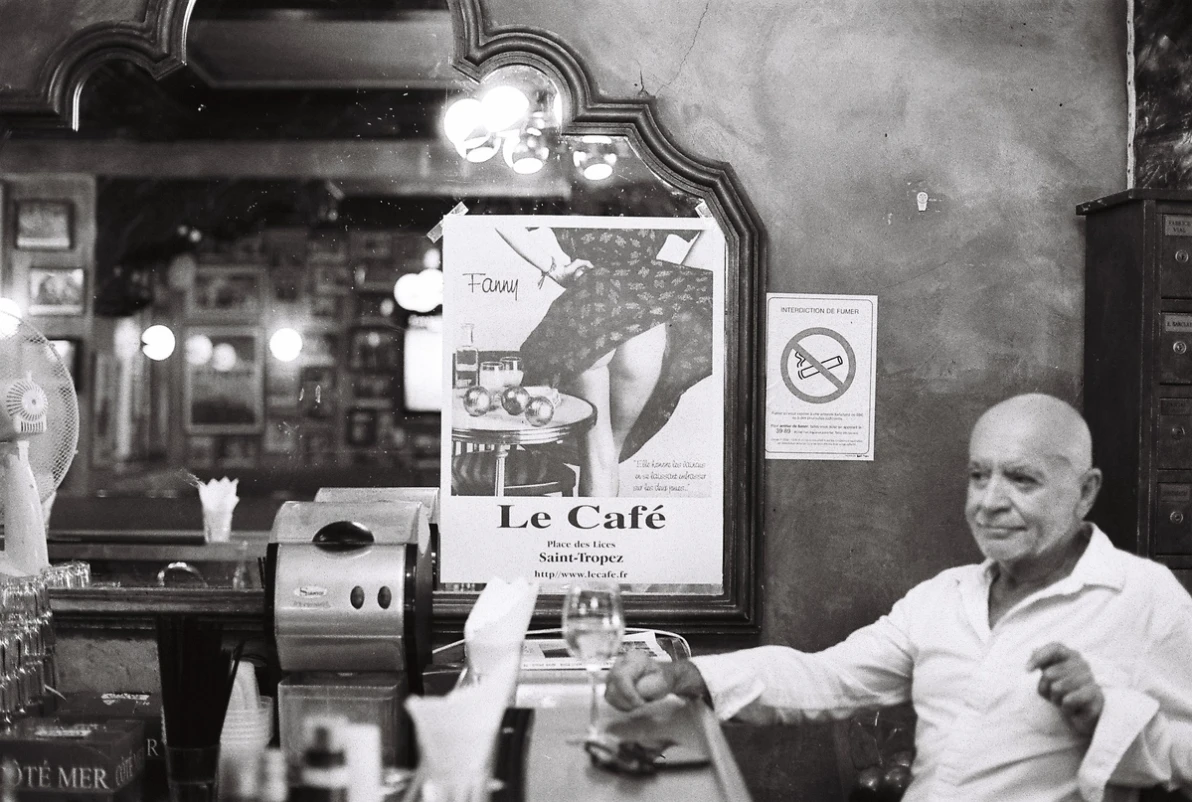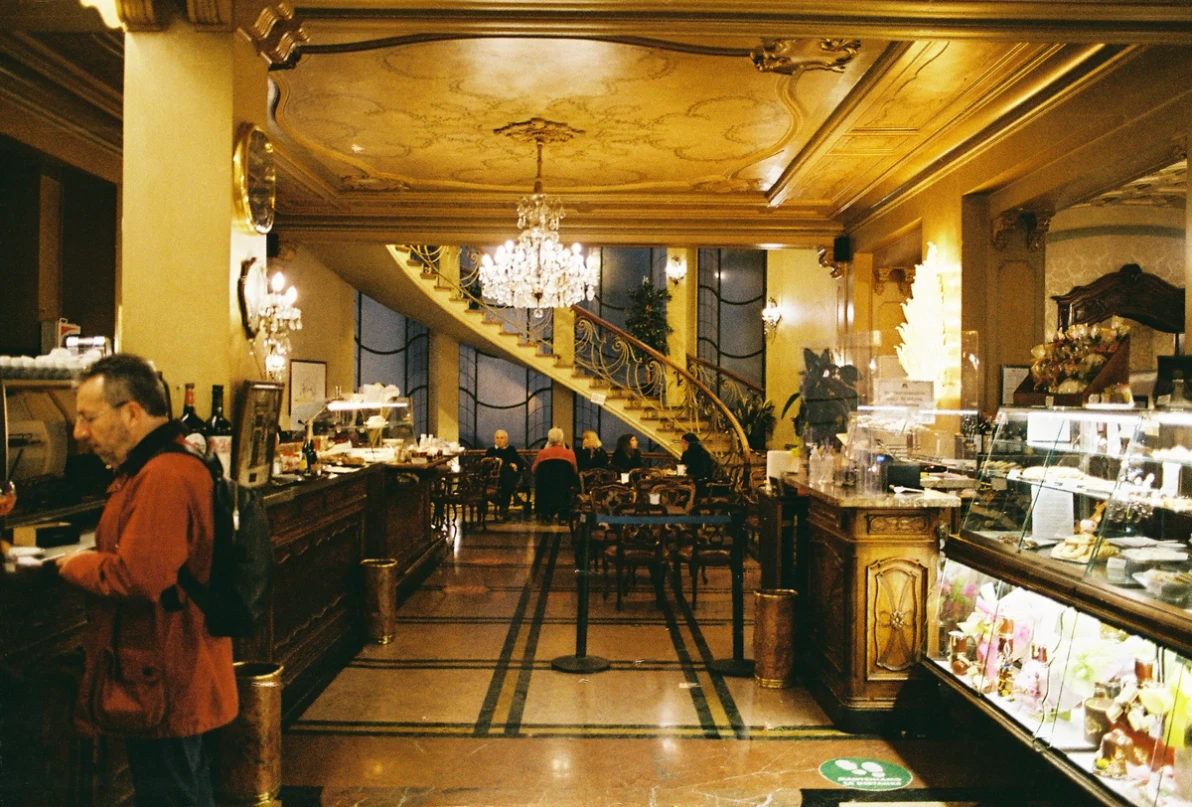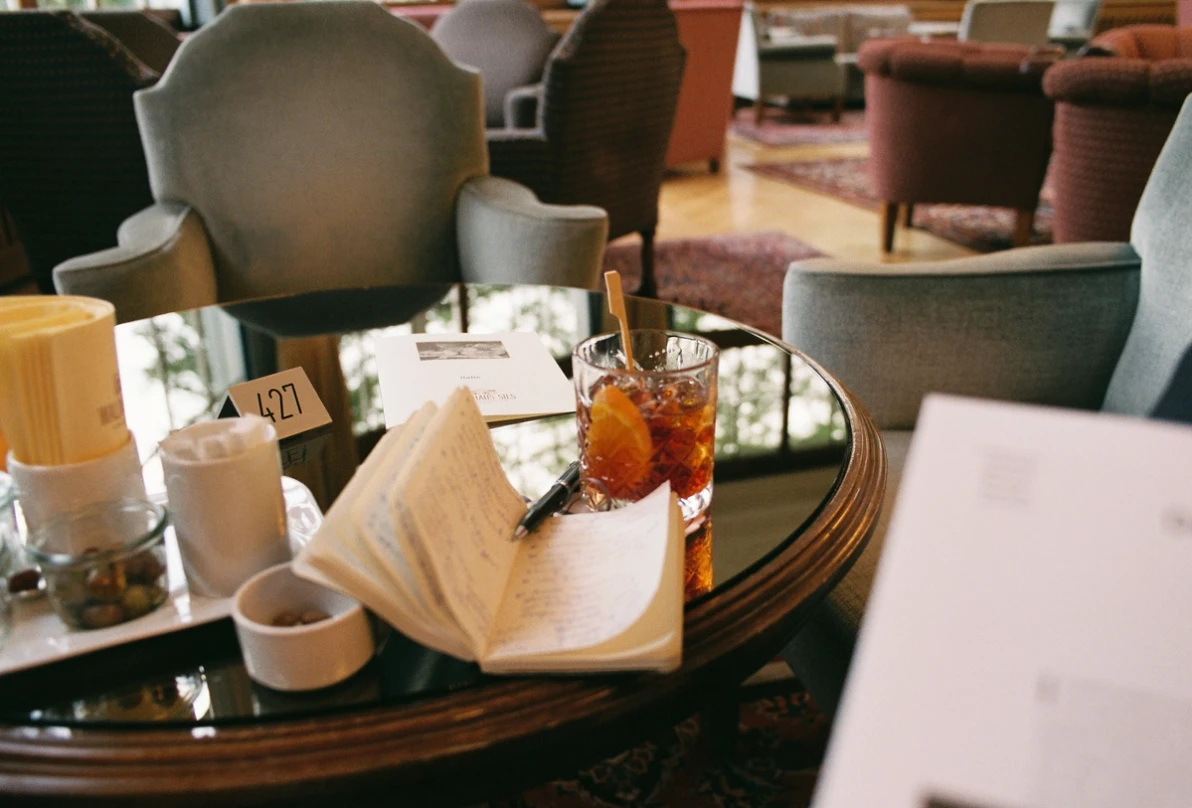The Art of the Aperitif
I imagine heaven as a kind of evening on the terrace of an old cafe or a hotel bar. Mediterranean blue hours lit by the lanterns of planets, as can only be seen in a country between the North and the South and a couple of tables with white tablecloths. A little bit of haze. A waiter comes by now and then, bringing a drink, and the moment starts all over again. A large square in front of it, which my girlfriend will sometime cross, towards me and the drink. A peal of bells! The hour for aperitifs has arrived, the prelude can begin, the prolongation of the experience, the moment before all other moments. An event begins before the main event, maybe dinner. These are weightless hours to celebrate life. The most beautiful of them arises after one has liberated oneself from a certain feeling, taken a shower and moisturised, and is waiting in one’s suit for a girlfriend who needs a little longer to get ready.
Waiting with a drink for someone you love is a wonderful feeling. You note the comings and goings of the ships, find out all about the best restaurants, the freshest fish and the latest gossip from the barman. You enjoy the time, look forward to her arrival instead of chiding her about what has taken her so long. I have waited for her like this at many bars. By the sea and in the mountains, on squares and on coasts, by lakes and in cities. Bologna, Riviera, Lago di Como, especially in Madrid and San Sebastián.
I always associate a special taste with San Sebastián which reminds me of a particular feeling. There are certain drinks that one should only drink in certain places and then only rarely in between times, to remind oneself of the places and the feeling. We spent one winter where the queen of Spain once spent her summers. We stayed in a mid-19th century hotel with a view of the sea and drank Martinis in the hotel bar. It was a beautiful bar with red velvet and brass, the waiters wore cufflinks and passed round savouries. The bar was long and had cushions for resting elbows when talking, or just saying nothing, just sitting silently and looking through the room to the sea. They were simple Martini biancos. If you knew nothing about vermouth, you might think Martini is vermouth. Your taste buds get conditioned, depending on how long this ignorance persists. Martini bianco stayed with me a long time. With crushed ice and squeezed lemon juice. And it still persists.
It was still persisting when, much later, Stefan, behind the bar in the Bristol Vienna, presented me with a decent vermouth. Everything I know about vermouth and Turin, I know from him. The only thing that is important to me is that it is served in an old-fashioned glass and not in a Martini glass, nor in a milk glass like in Harry’s, for God’s sake.
Another nice drink is Vieux Carré, a cocktail once made for me by a barman in the Chicote, in Madrid, after I had said that I didn’t like cocktails. He asked me what I did like, and I said honest stuff, nothing mixed. Cognac, vermouth, whisky, but only rye, occasionally a Bénédictine. He laughed and said I could have all that at once. Vieux Carré is often a bit strong to start off. So is pastis, but with a little water you don’t taste the strength, you only feel it. It tastes best in front of Le Cáfe, Saint-Tropez.
I always thought the village was a bit of a dump, but it isn’t. We drove through one afternoon and would have driven almost straight through if we had not seen the old guys playing boules in front of Le Cáfe. We stopped and played and ordered a round of this delicate aniseed spirit. After the first one, though, you can no longer drive, so you wait and drink another and end up staying all night. Wines are better if you still have to drive or just generally go somewhere else afterwards. Etna Rosé for example, on the terrace of the Grand Hotel Timeo. The most important ingredient for a good glass of volcano rosé is the view and a terrace from which to see it. Clouds get snagged in the valleys of the volcano in the late afternoon and you can see in the distance how the mountains beyond become more and more visible. Primeiras Gotas is another wonderful aperitif wine. It comes from Portugal, near Torres Vedras, Lisbon region, but you can drink it wherever you find it.
Especially the Curtimenta, a white which is fermented for two weeks in the skins. 90% Moscatel Graúdo and 10% Arinto. Minerally, cold. We know a shop in Lisbon where you can drink it and once we saw it in Bologna and dispensed with dinner. In Bologna, the accompaniments to the drinks go far beyond olives, nuts and potato crisps. I even have a drink named after me, which is nonsense of course, and not patented, but Mirco, the mixer in the Palazzo Margherita, right in the South of Italy, named it that. The drink came into being on a sweltering hot summer day after a long drive in a convertible. Maybe the drink already exists, but not with a ride in a convertible and Mirco, and this wonderful hotel managed by Francis Ford Coppola.
You sit at the bar in a basket seat, wearing a light suit, smoking short cigarettes and drinking with the locals from the village. Mirco said I always drink the same thing, and didn’t I want to try something different. He mixed Antica Formula and St. Germain in a 2:3 ratio, put a large ice cube, added tonic, but not Schweppes and rounded the whole thing off with a basil flower. As you can see, a good old Negroni did not make it into the text. I only drink it because everyone drinks it and everyone knows it, but I can’t, nor gin, nor Campari. Aperol is easier to drink, on the terraces of Capri. If you hold the orange in the glass against the blue of the sky, where does the sky start, where does the sea, life, stop?
PS. Oh yes, and what is always right anywhere, any time: a nice, cold, small beer, open, drink.... aaaah.









The newest issue of St. Moritz – Views from the Top is available at the Tourist Office and online!•Spring in St. Moritz – warm sunshine, birds chirping and slushy snow.•Inspiration for Spring?•



























